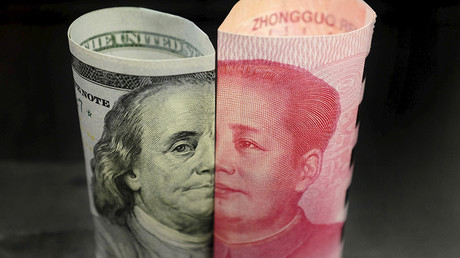Then his Twitter account was suspended, but there was some confusion. On Saturday, Mr. Stone wrote on Facebook that Twitter had notified him that the suspension would last only a few hours.
But on Sunday, the account remained suspended. It was unclear whether that would be permanent. Mr. Stone told The Wrap he would sue Twitter. “The battle for free speech has just begun,” he said.
Hope Twitter is ready. Roger Stone set to sue them over being banned. https://t.co/HxcqTjapo5 pic.twitter.com/Epd3kMuLuv
— Stone Cold Truth (@StoneColdTruth) Oct. 29, 2017
“I have been inundated on Twitter with bloggers threatening to kill me, my wife, my kids and even my dogs, yet Twitter seems unconcerned about that,” he told The Wrap. “This is just part and parcel of the tech left’s effort to silence conservative voices.”
Mr. Stone has since promised to speak out on other Twitter accounts, including those associated with his blog and the biographical movie “Get Me Roger Stone.” He has also started a petition calling for Twitter to reinstate his account.
I have been informed that my main account has been suspended for 3 hours and 12 minutes. Sometimes the stark truth offends some people. I’ll be baaaaaack…
— Get Me Roger Stone (@STONEFLIK) Oct. 28, 2017
Emails sent to Mr. Stone via his blog, StoneColdTruth, were not answered immediately on Sunday.
As a corporation, Twitter has the right to suspend accounts. A spokeswoman said on Sunday she could not comment on any specific users but pointed to the company policy on abusive behavior.
She highlighted the lines that said users “may not incite or engage in the targeted abuse or harassment of others” and that an account may be considered abusive if it is “inciting others to harass another account.”
There has been scrutiny over the company’s suspension policies given Twitter’s growing role in public discourse, especially because Mr. Trump uses it to bypass traditional news outlets and reach his supporters — and detractors — directly.
I love Twitter…. it’s like owning your own newspaper— without the losses.
— Donald J. Trump (@realDonaldTrump) Nov. 10, 2012
Mr. Trump has tweeted to promote policies and to lob insults at various targets, including mainstream media outlets like The New York Times, politicians on both sides of the aisle, celebrities who criticize him and the mayor of San Juan, P.R.
Advertisement
Continue reading the main story
He has also retweeted images and videos with violent content, including one that showed him wrestling and repeatedly punching a man with a CNN logo imposed over his face, and another clip edited to show the president hitting a golf ball and striking his former campaign rival Hillary Clinton in the back.
Some targets of Mr. Trump’s criticism have endured additional insults and threats from the president’s supporters, leading some to wonder whether the president has encouraged harassment and should be banned from Twitter himself.
Newsletter Sign Up
Continue reading the main story
Thank you for subscribing.
An error has occurred. Please try again later.
You are already subscribed to this email.
Mr. Stone left Mr. Trump’s campaign in 2015 amid widespread speculation about the reason for his departure.
Mr. Trump said Mr. Stone was fired; Mr. Stone said he left voluntarily, suggesting that the candidate’s comments about the news anchor Megyn Kelly — comments that referred to “blood coming out of her eyes, blood coming out of her wherever” — had prompted his departure.
But Mr. Stone remained loyal to the president and maintains that the two still have a close relationship.
On Monday, InfoWars published an article in which Mr. Stone said he urged Mr. Trump, in a “friendly phone call,” to release government documents about the assassination of President John F. Kennedy. Mr. Trump ordered the release of more than 2,800 of the documents on Thursday.
Continue reading the main story
Article source: https://www.nytimes.com/2017/10/29/us/politics/roger-stone-twitter-suspended.html?partner=rss&emc=rss









